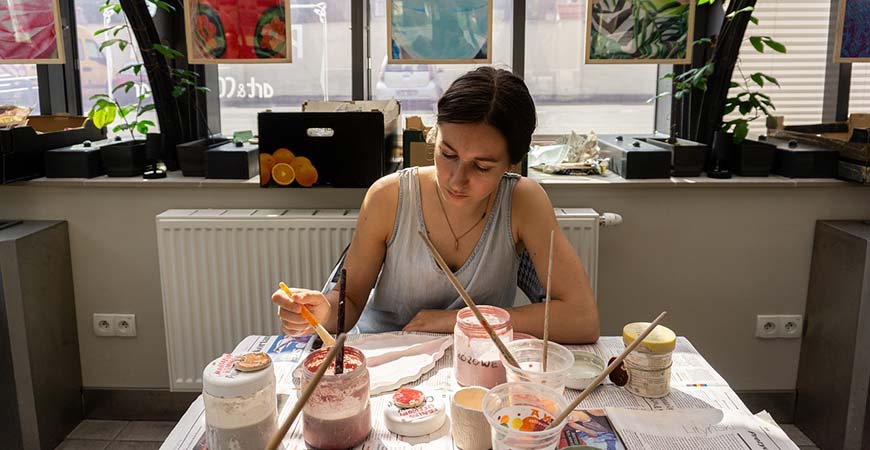There are so many benefits of art therapy that I discuss often. Examples include promoting emotional resilience, coping with stressors, calming anxiety, and expressing yourself when words are too difficult. However, there are also some art therapy risks to be aware of. A credentialed art therapist can help you to mitigate risks to make sure your experience is as safe as possible.
Emotional Risks
When you enter into any therapeutic relationship, there is always a small chance of emotional risk based on the nature of your work in session. Emotional risk can look like feeling uncomfortable, digging up repressed thoughts and emotions, and anxious feelings about discussing your challenges with another person. Therapy requires some emotional risk in order to help you heal and progress towards your goals. But you and your therapist must handle the risk with the utmost of care.
Emotional art therapy risk can include discovering uncomfortable feelings through art making, feeling self-conscious about making or communicating your art, or feeling uncomfortable making art.
In addition, working with specific materials or engaging in specific interventions can pose risk to your emotional state. Art therapists are trained to mitigate these emotional risks by choosing the best interventions and assessments for each client. Some materials and techniques can also bring up repressed or suppressed emotions. Art therapists are trained to screen for these concerns before choosing materials for a client. They’re also trained in ways to de-escalate and navigate challenging emotions that arise.
Physical Safety Risks
Physical safety risk is another element to consider when beginning art therapy. When we work with art materials, there is art therapy risk in using some of the tools and media. Exposure to paints or glues, or to sharp objects like scissors or x-acto knives are just a few examples. These materials can be harmful to everyone if not used or stored correctly. They also pose more risk to people susceptible to chronic illness or those who are challenged by self-harm behaviors.
Working with a credentialed art therapist will help ensure that physical safety art therapy risks are minimized through proper storage and appropriate recommendation of supplies suitable for each client. In addition, art therapists make sure that the environment in which they work is safe, both emotionally and physically as a means to prevent any potential harm to clients.
Advertising Risks
“Art therapy” is a specific term reserved for individuals trained and certified in the field of art therapy. This means that these individuals hold Master’s level education and training in the field of art therapy and are certified by the Art Therapy Credentials Board. However, many times individuals who are not credentialed in art therapy state that they offer art therapy on their business websites, directories, or in their communication with potential clients as a marketing technique to build their clientele. This is extremely unethical.
The risk of working with an individual who states that they offer “art therapy” but does not have any training in art therapy is that it opens up the door to client harm. Art therapy is a specific practice that involves appropriate use of materials, interventions, and risk assessment. Non-art therapy credentialed providers are not trained in the appropriate navigation of these risks.
A credentialed art therapist has specific acronyms behind their name, including, but not limited to ATR-P, ATR, and ATR-BC. Some states also offer specific state licensure which have different acronyms and can vary by location. If you’re seeking art therapy services, these are important titles to look for in order to avoid risks from false advertising.
Want to learn more about the author? Click here.
Image by Yevhen Liashchevskyi from Pixabay
